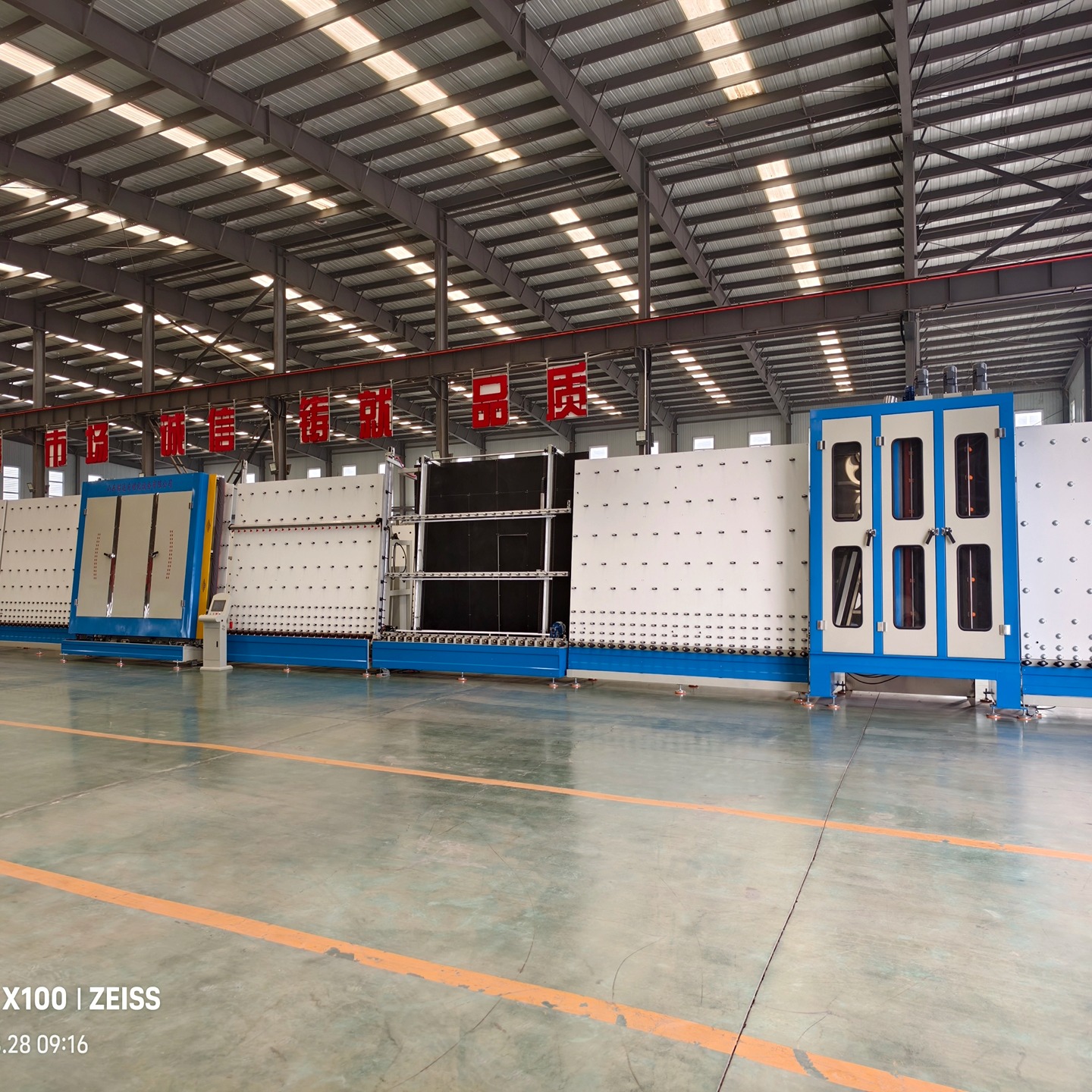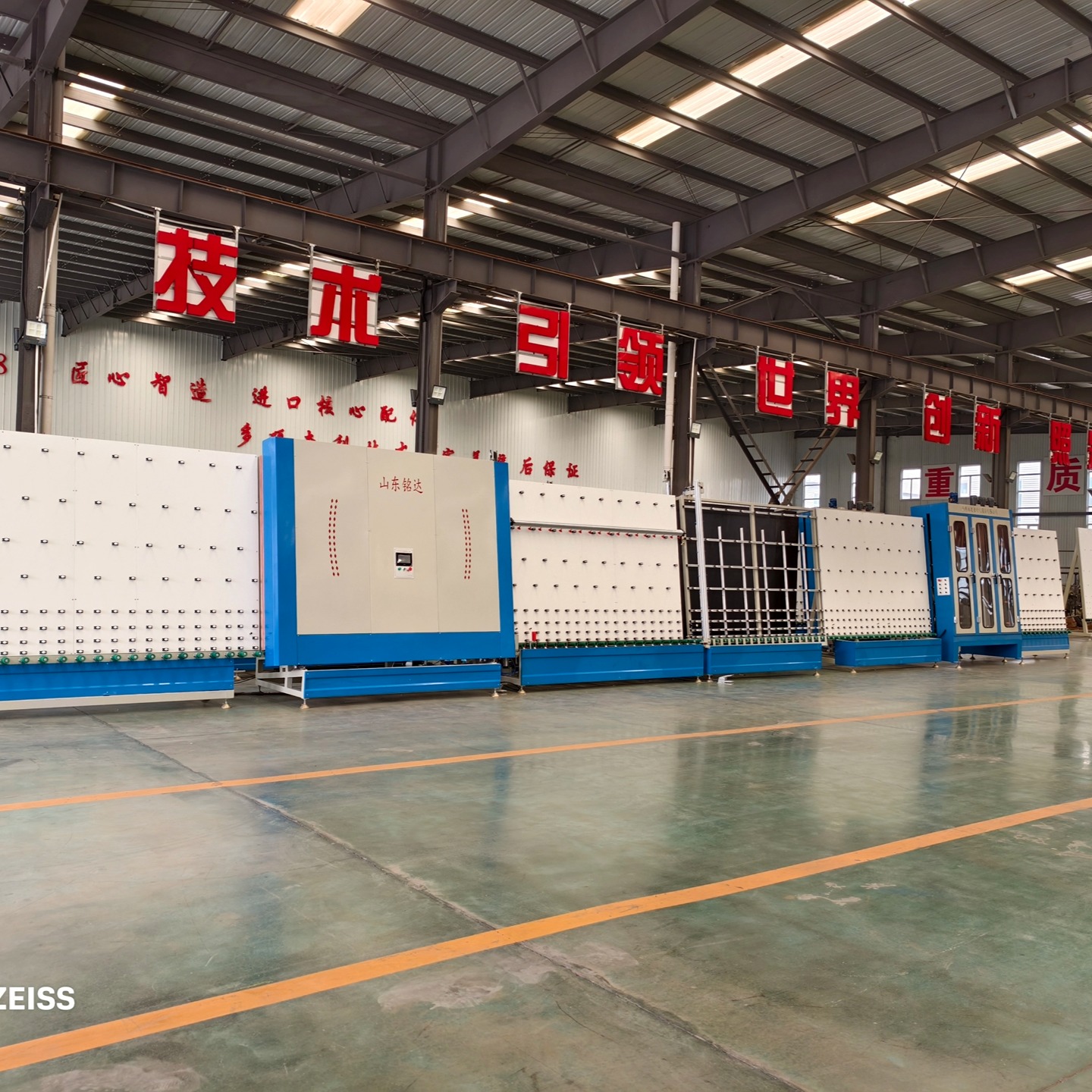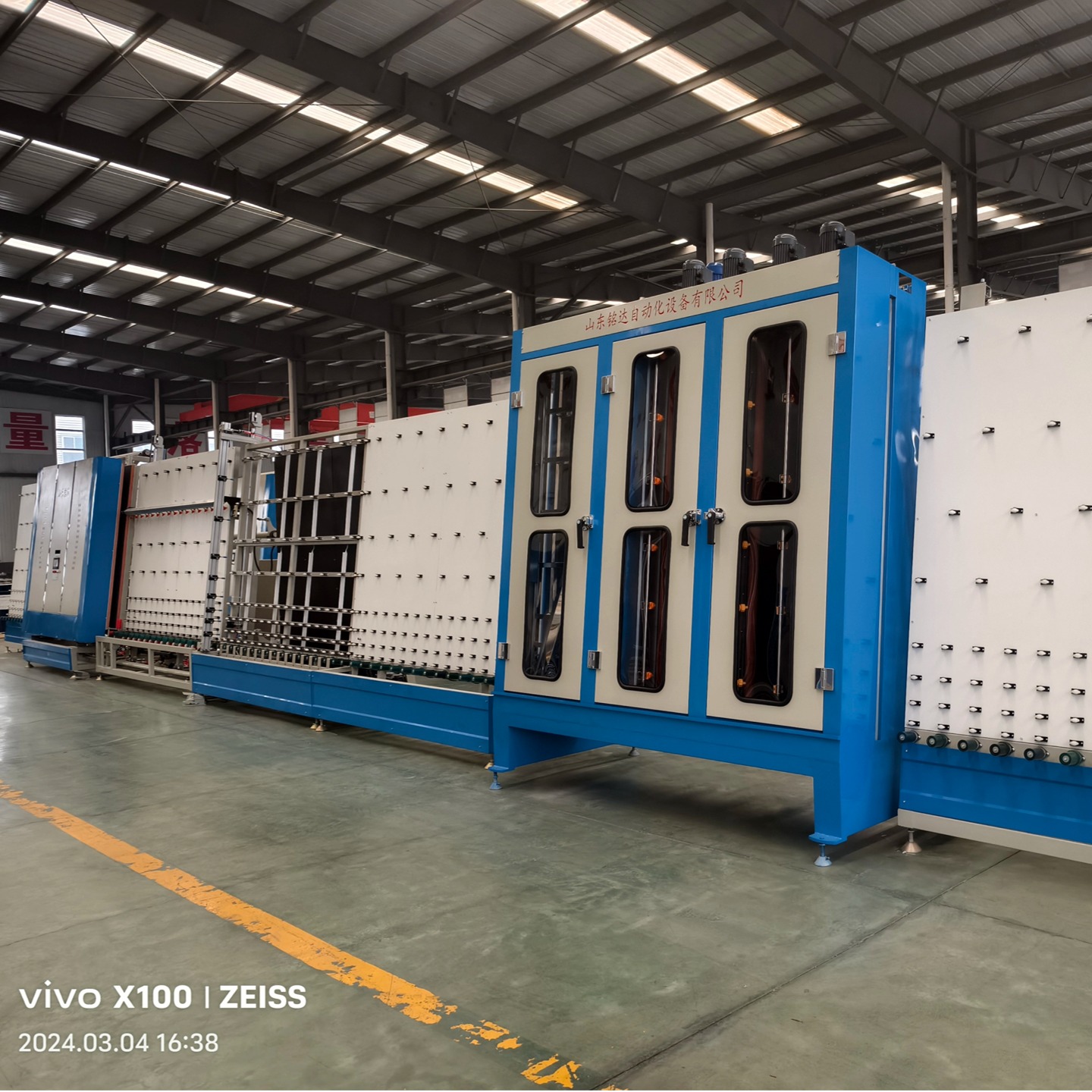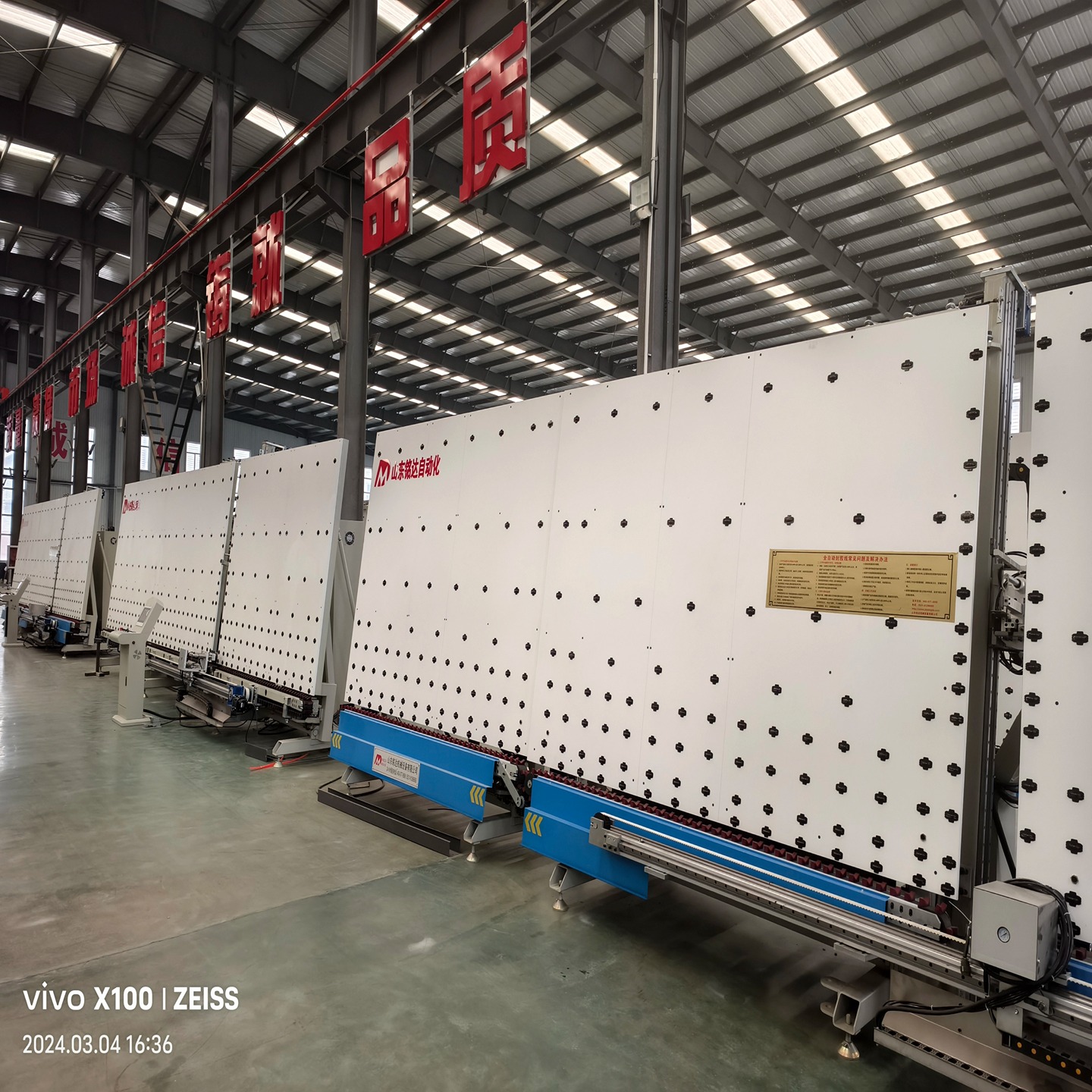Entering a new era of intelligent and green manufacturing
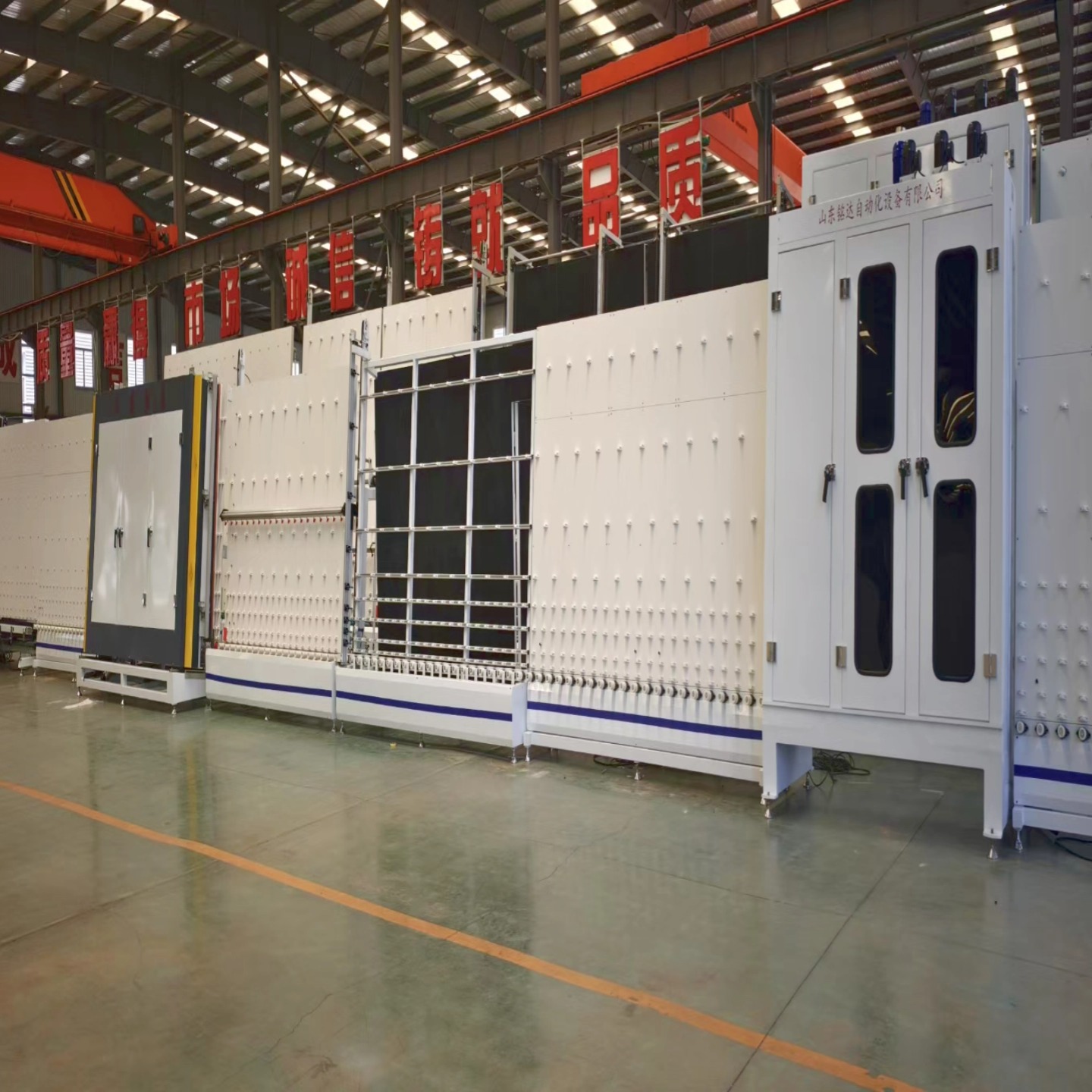
Today, the world's requirements for building energy efficiency, living comfort and sustainable development are becoming more and more stringent. As a key component of the building envelope, insulating glass is facing the dual test of "performance upgrade" and "production capacity improvement". This demand directly promoted the technological innovation of its core manufacturing equipment - insulating glass equipment. In the future, the development of insulating glass production lines will no longer be limited to the improvement of a single function, but will rapidly move towards the deep integration of intelligence, flexibility, extreme efficiency and green environmental protection.
1.Core driving force: market prospects with broad potential
The market prospects of insulating glass equipment are closely related to the needs of its downstream industries. The core driving force for its development mainly comes from four aspects:
1. Strong policy promotion: The advancement of the "double carbon" goal on a global scale has prompted countries to introduce more stringent building energy-saving regulations (such as the ultra-low energy consumption building standards promoted by China). These regulations mandate the use of high-performance energy-saving glass, creating a stable and continuously growing market space for high-end insulating glass products.
2. Demand for consumption upgrades: Consumers’ requirements for the comfort of the living environment (such as heat insulation, thermal insulation, and sound insulation effects) are constantly increasing. There is a strong demand for high-performance insulating glass in high-end residential buildings, medical buildings, educational venues and other fields.
3. Replacement of old and new production capacity: The simple production lines built in the early days can no longer meet the production requirements of modern high-performance insulating glass. The market potential brought by equipment upgrading is huge.
4. Expansion of emerging application fields: New products such as building-integrated photovoltaics (BIPV), electrochromic glass (i.e., smart dimming glass), and interactive glass with built-in displays are constantly emerging. These products have put forward new customized requirements for insulating glass equipment.
Under the combined effect of these driving forces, the insulating glass equipment industry will usher in a wave of technological upgrades with "high quality" as the core.
2.Future development trends: technology integration and model innovation
In the future, insulating glass production lines will gradually upgrade from traditional mechanized "manufacturing tools" to highly intelligent "production systems", showing four major development trends:
1. Comprehensively realize intelligence and digitalization
- Industrial Internet of Things (IIoT) and big data applications: Every key component on the production line (such as glue pumps, motors, sensors) will become a data collection node, collecting various operating data such as temperature, pressure, flow, and energy consumption in real time. These data will be transmitted to the cloud platform for big data analysis, thereby realizing three major functions:
Predictive maintenance: Equipment proactively issues warnings before failure occurs and provides specific maintenance recommendations to minimize losses caused by unplanned downtime.
Process parameter optimization: The system can independently learn production rules and recommend optimal production parameters (such as temperature, pressure, operating speed) for glass of different materials and specifications to ensure the best product quality.
Full life cycle management: From the time the order is placed to the final delivery of the product, the entire production process can be traced, and performance reports and quality analysis reports are automatically generated to facilitate production control.
Artificial intelligence visual inspection: With the help of high-resolution cameras and AI algorithms, it can automatically detect whether the butyl rubber coating is uniform, whether there are breakpoints and bubbles in the second sealant, and whether the molecular sieve filling is sufficient. This method can replace manual inspection and achieve 100% online quality inspection. The inspection efficiency and accuracy far exceed manual operation.
2. Create ultimate flexibility and modularity
In order to adapt to the market's "small batch, multi-variety" production needs, the production line must have the ability to quickly switch production specifications.
"Lego-style" modular design: Equipment manufacturers will provide standardized functional modules (such as cleaning module, gluing module, closing module, and inflation module). Customers can freely choose and combine production lines according to their own product positioning (whether they are producing standard door and window glass or manufacturing complex BIPV components) like building blocks; if necessary, they can easily upgrade the equipment and expand new functions.
One-click production change: Preset the production recipes (Recipe) of different products through the central control system. When it is necessary to switch glass specifications, spacer types or sealant types, just call the corresponding production formula, and the equipment can automatically adjust all parameters, greatly shortening the adjustment time and reducing the dependence on skilled operators.
3. Pursue higher performance and production efficiency
Warm Edge technology is fully popularized: As high-performance warm edge spacers (such as TPS spacers, stainless steel spacers, composite spacers) become mainstream in the market, insulating glass equipment needs to be compatible with these new materials and optimize its on-line, bending, gluing and other processes. In particular, support for seamless sealing technologies such as TPS (thermoplastic sealing system) will become an essential feature of high-end insulating glass equipment.
Ultra-high-speed, high-stability gas filling technology: Filling inert gases such as argon into insulating glass is a key link to improve the thermal insulation performance of glass. Future inflation equipment will focus on three major breakthroughs: shorter inflation time, higher gas replacement efficiency, and more precise concentration control to ensure that the gas retention rate exceeds 90%; at the same time, it will achieve perfect cooperation with the sealing process to prevent gas leakage.
Energy-saving and environmentally friendly design upgrade: The equipment itself will also implement the concept of energy-saving, using more efficient motors, heat recovery systems (such as heat recycling for cleaning water), low-power standby mode and other designs to reduce carbon emissions in the production process.
4. Redefine the human-machine collaboration model
Automation is not meant to completely replace labor, but to free people from repetitive and arduous labor and optimize the human-machine collaboration relationship.
- Simplified operating procedures: Complex parameter settings and process adjustments will be completed with the assistance of the system. The role of operators will change from traditional "manual workers" to "equipment managers" and "exception handlers", focusing on equipment monitoring and problem solving.
- Application of AR (Augmented Reality) technology: Maintenance personnel can use AR glasses to view the virtual disassembly and assembly guide of the equipment, real-time operating data, and even receive guidance from remote experts, greatly improving equipment maintenance efficiency and quickly improving the professional skills of maintenance personnel.
3. Challenges and potential opportunities
In the process of moving towards the future, the insulating glass equipment industry faces both challenges and many opportunities:
1. Challenges faced
high initial investment cost: Highly intelligent production lines are expensive to build, which will put a certain amount of financial pressure on small and medium-sized enterprises with weak financial strength.
There is a large gap in technical talents: The industry needs comprehensive talents who are familiar with mechanical production processes, as well as software operations and data analysis skills for equipment operation and maintenance. Currently, such talents are in short supply.
Rapid technological iteration: New technologies and new processes are constantly emerging. Enterprises need to continue to follow technological developments and invest resources in upgrading equipment to avoid premature elimination of equipment due to technological backwardness.
2. Potential opportunities
seize the opportunity in the high-end market: Companies that take the lead in carrying out intelligent transformation can produce products with better performance and more stable and reliable quality, thereby standing out in high-end market competition and international competition and occupying a favorable position.
Build a new service ecosystem: Equipment manufacturers can change the traditional "equipment-only" model to a "equipment + service" business model. By providing remote equipment monitoring, production data analysis, value-added technical services, etc., they can establish long-term and stable cooperative relationships with customers and expand profit margins.
The development prospects of insulating glass equipment are closely connected with the development trends of green buildings and intelligent manufacturing. In the future, competition within the industry will no longer be about the performance of a single device, but about technological depth and resource integration capabilities. Those equipment manufacturers that can take the lead in embracing the trends of intelligence, flexibility, and digitalization and are committed to providing customers with one-stop solutions will not only lead the formulation of standards for the next generation of insulating glass production lines, but will also provide a strong impetus for the entire architectural glass industry to develop in a more energy-saving, smarter, and more sustainable direction.
